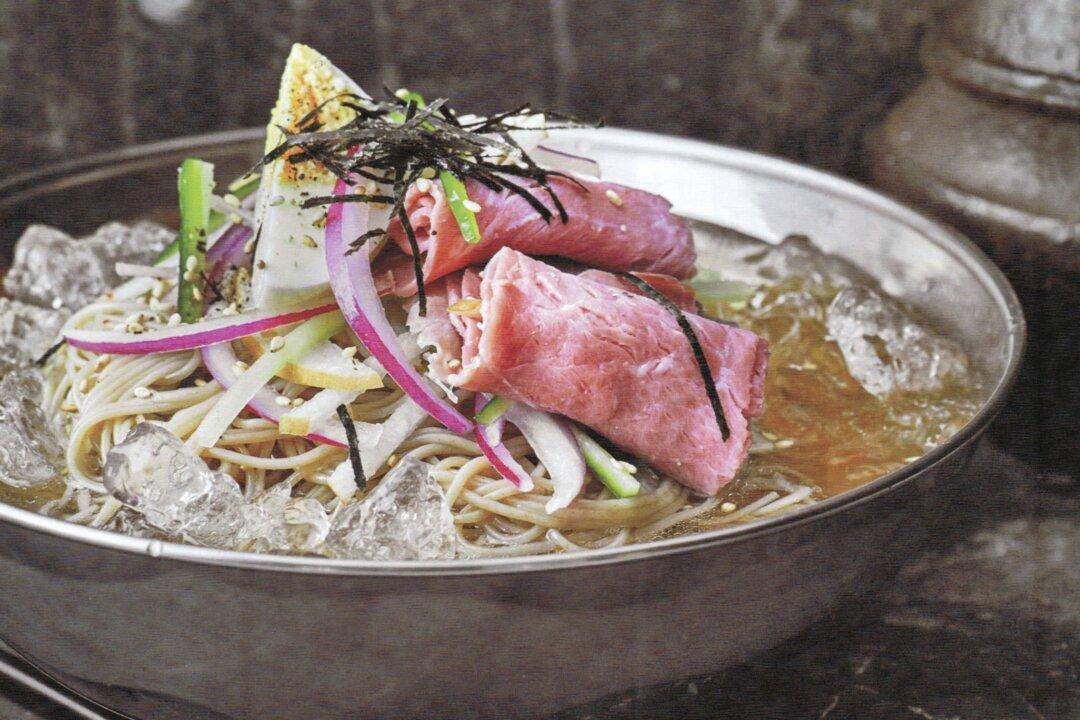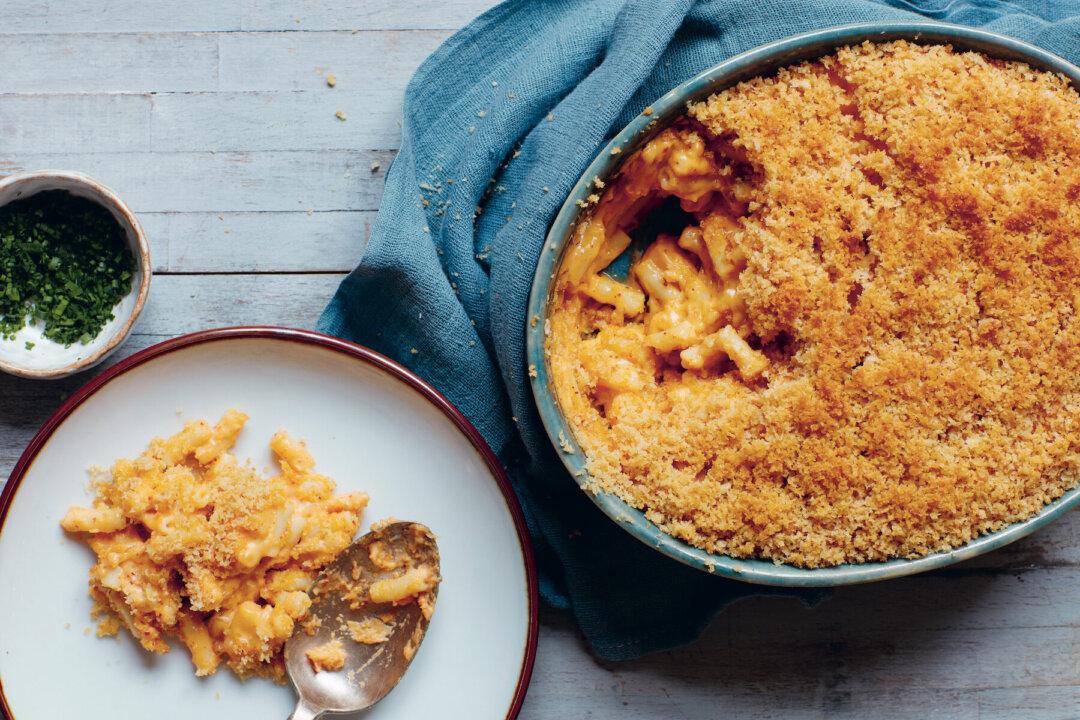“Don’t cut the noodles,” my mom tells me, as she piles a large, grey-ish mound of thin, stretchy strings into a bowl. “It is good luck to keep them long.”
She smiles, and then pours in the half-frozen, vinegary beef broth, creating a slushy moat around the island of noodles. She gently places half of a hard-boiled egg, a few slices of beef, julienned pear, and cucumber on top. She lovingly places the bowl in front of me, then finishes it off with a touch of roasted sesame oil and a dollop of Korean mustard, thus completing my bowl of naengmyeon, or “cold noodles.”





